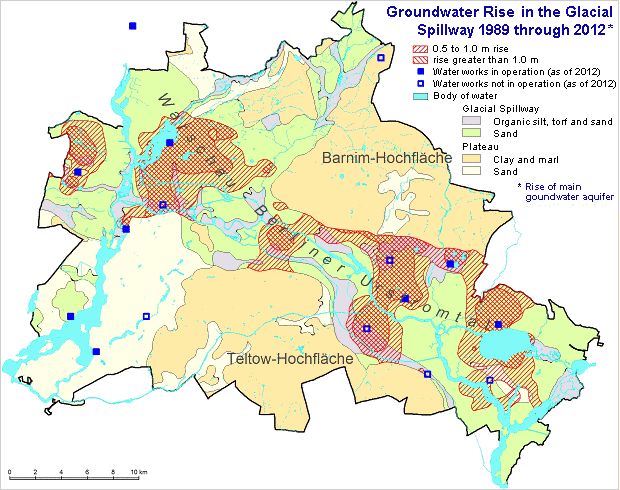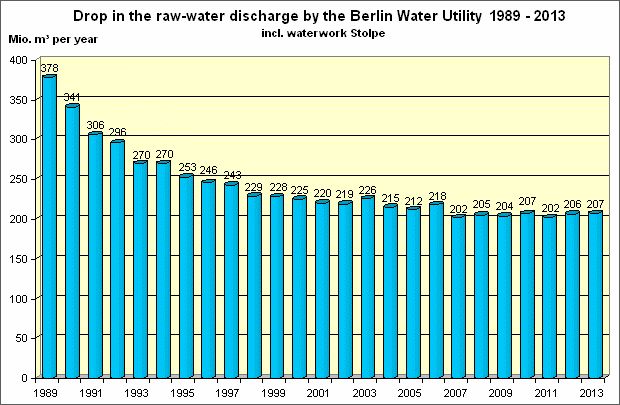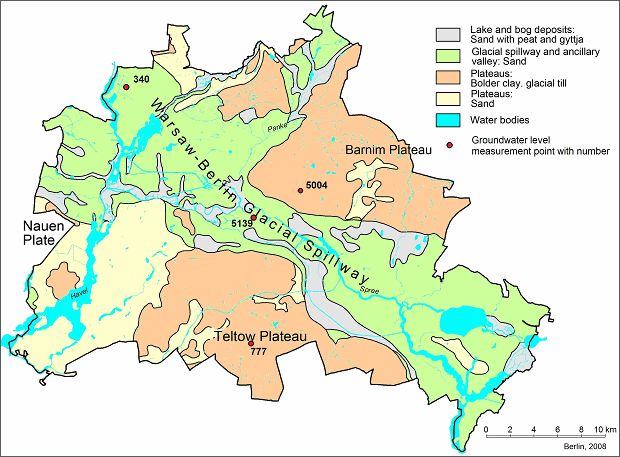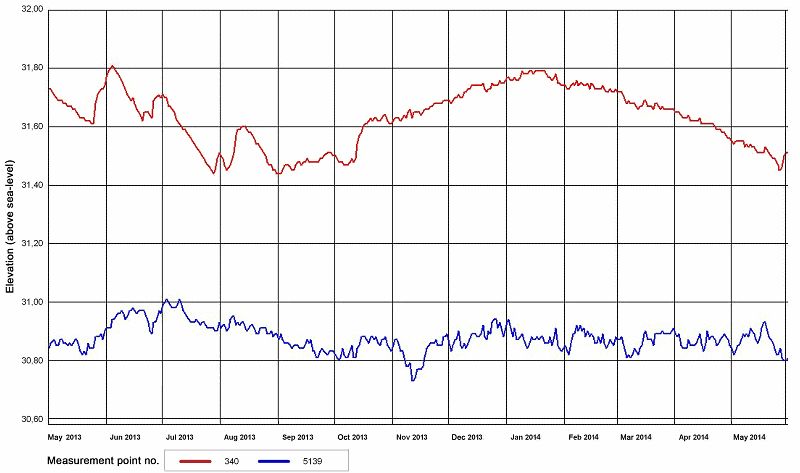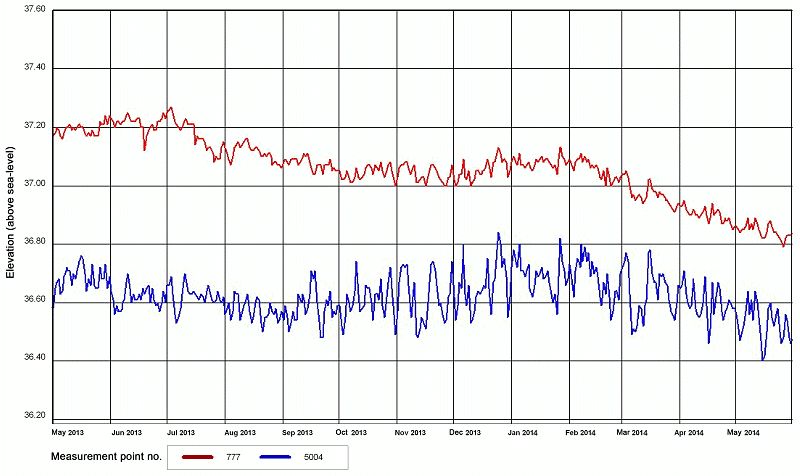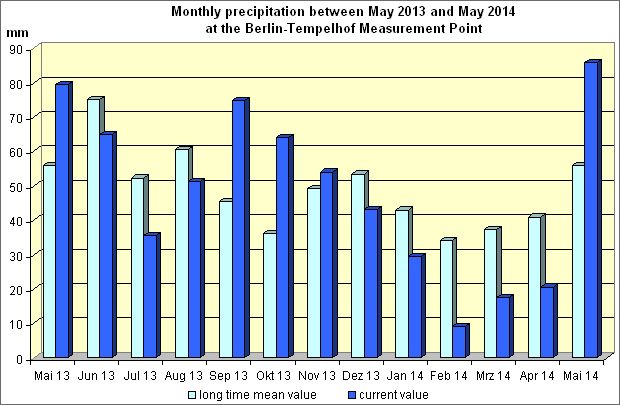The present groundwater contour map describes the groundwater situation of the Main Aquifer with violet groundwater isolines and the Panke Valley Aquifer in north-eastern Berlin with blue isolines. The interval between the groundwater isolines is 0.5 m. These show the piezometric surface area of the unconfined and confined groundwater, respectively (see also Fig. 3). In areas of the Main Aquifer with confined groundwater, the groundwater contours are displayed in broken lines. In areas with no main groundwater aquifer, or with an isolated main groundwater aquifer of low thickness, no groundwater isolines are displayed. Those areas are shown with black dots.
The map is based on the topographical General Map of Berlin, scale of 1:50,000, in grid format, and the geological outline for the Berlin state territory, at a scale of 1:50,000 (2007), which was derived from the geological General Map of Berlin and Surrounding Areas, scale of 1:100,000. In addition, the appropriate support points (groundwater measurement points and surface-water levels) as well as the individual waterworks are indicated, with their active wells and water conservation areas.
Differing regulations exist in the Johannisthal water conservation area established on January 18, 2013. The respective areas are shown on the map Water Conservation District Johannisthal (Preliminary Order).
Hydrogeological Situation
On the plateaus, the main aquifer is extensively covered by the glacial till and bolder clay (aquitards) of the ground moraines. Wherever the piezometric surface of the main aquifer lies within such an aquitard, groundwater conditions are confined. In sandy segments above the till, the periodic formation of perched groundwater is possible, which can, after extreme precipitation, rise to the surface. The groundwater levels of these locally highly differentiated areas have not been separately ascertained and portrayed. Within the till, sandy islands may become filled with groundwater, or so-called stratum water (see also Fig. 3).
In the Panke Valley, on the northern side of the spillway, the Barnim Plateau, a major independent coherent aquifer has developed. It is located above the main aquifer, which is covered by the glacial till of the ground moraine (see also Figs. 7 & 8). On the present map, this aquifer is indicated by separate blue groundwater isolines. A spur of the glacial till toward the Warsaw-Berlin Glacial Spillway creates an interlock of the Panke Valley Aquifer with the Main Aquifer there.
For more information, see the Groundwater Brochure:
www.berlin.de/sen/uvk/_assets/umwelt/wasser-und-geologie/publikationen-und-merkblaetter/grundwasser-broschuere.pdf (only in German)
Current Situation in May 2014
As a rule, the groundwater incline in Berlin, and hence, too, the flow direction, is from the Barnim and Teltow Plateaus and the Nauen Plate toward the receiving bodies, the Spree and Havel Rivers. Depression cones have formed around the wells at those waterworks in operation during the measurement period, and have sunk the phreatic surface below the level of the neighbouring surface waters. Thus, in addition to inflowing groundwater from the shore side, the water pumped here also includes groundwater formed by infiltration (bank-filtered water) from these surface waters (see also Fig. 4c).
In May 2014, too, the potentiometric surface, which has been lowered in Berlin by drinking-water discharge over the past hundred years, was at a relatively high level compared to 1989 (Limberg et al. 2007: pp. 76 ff.). Areas of groundwater rise for this period of time in the glacial spillway of more than half a meter and of more than one meter are shown on the map (Fig. 10).

